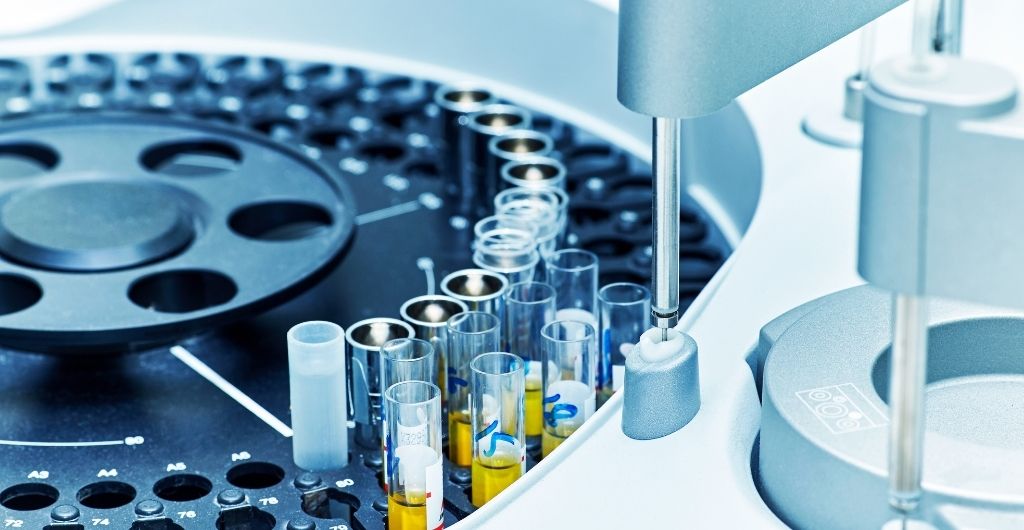
How motors can improve laboratory sample testing speed and accuracy
In medieval times, medical diagnoses largely relied on the use of urine wheels — charts that corresponded urine colour with different diseases. While urology remains an important area of study, doctors now rely on a multitude of tests to diagnose patients. Slow and incorrect diagnosis delays treatment, so how can doctors deliver accurate test results without delays from the laboratory? Here, Stewart Goulding managing director at mechatronic drive system supplier EMS Ltd, explains how precision motors can enhance speed and accuracy in medical testing laboratories.
When the patient’s condition is not visually detectable during a doctor examination, clinical samples such as blood, skin cells or saliva are sent to medical laboratories for various tests — known as in vitro diagnostics (IVDs).
It’s important that these tests are performed quickly and accurately so patients can receive treatment as soon as possible, therefore minimising discomfort and preventing disease progression. For some diseases, such as cancer, early treatment is critical for the patient to experience a good treatment outcome.
A medical laboratory can carry out up to 3,500 different diagnostic tests. With so many tests occurring at once on a large number of samples, an organised and efficient laboratory is vital. Automated laboratory equipment increases testing efficiency and decreases the possibility of human error.
Efficient transportation
With each sample requiring its own unique combination of tests, transporting the samples to the correct area is crucial. Time spent in transport is time not spent in testing, so samples must be moved between areas as quickly as possible. It’s also important that samples are moved carefully, as a damaged sample cannot be analysed, therefore delaying diagnosis of the patient.
Conveyor belts provide a steady and efficient way to transport samples around the laboratory. The motors inside the conveyor must have high torque to provide quick transportation. Precise speed control is important to accommodate frequent stops and starts, and to ensure all the motors are moving at the same speed to keep the conveyor steady.
When a sample reaches its relevant testing area, it is scanned to determine the required type of analysis. Robotic arms can then pick the samples from the transport container and place them in the relevant testing area according to their digital records. The robotic arms can repeatedly move many small samples at a greater speed then human laboratory technicians.
The motors used within the robotic arm must be small and lightweight to allow quick and agile movements. They must also have high precision to ensure the sample is held firmly and correctly in a highly controlled grip to avoid damage — too tight a grasp may cause the sample to deform or shatter.
Precise processes
In addition to careful transportation, accurate processing of the samples is vital for a correct diagnosis. Many samples require a degree of manipulation using a range of equipment before, and during, analytical tests. Preparing the sample correctly ensures the test results are reliable.
Centrifuges can separate a sample’s components so that only the material that is needed for the test remains. For example, blood can be centrifuged to separate it into its plasma, buffy coat and erythrocytes — a process known as blood fractionation.
The individual blood components can be used for different tests, such as analysing plasma to detect the amount of proteins in the blood, such as globulin, which supports the immune system and blood clotting. The motors in the centrifuge must operate at high speeds to ensure a complete separation of sample components.
Pipetting is used to divide samples up for different tests, move samples between containers and add testing liquid into a sample. Every drop counts when dealing with samples and testing fluids as an incorrect measurement could skew the results. Therefore, accuracy of an automated pipette is key to delivering a correct diagnosis. Automated pipettes that contain motors with precise speed control can remove and decant the exact amount of fluid needed.
Mixing and stirring is important for preparing testing substances and distributing them evenly within samples. Consistency within the sample is important to achieve an accurate result. Motors used in automated mixing and stirring machines must have fine speed control to allow different turning speeds. They must also be able to operate reliably for long periods of time.
While urology remains an important subject, medical tests have progressed far beyond medieval urine charts for disease diagnosis. Doctors today can send patient samples for a range of clinical laboratory tests to get to the cause of medical problems. Using compact, high torque motors with precise speed control to power automated laboratory equipment ensures an increase in accuracy and efficiency of sample testing, which brings patients relief faster.








